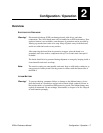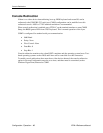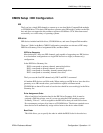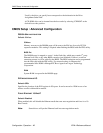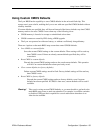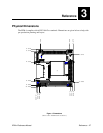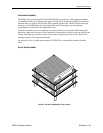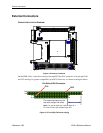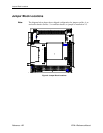
Using Custom CMOS Defaults
EPM-4 Reference Manual Configuration / Operation – 15
Using Custom CMOS Defaults
The Lynx BIOS has the capability to store CMOS defaults in the on-board flash chip. This
storage area is non-volatile, enabling the Lynx to run with user-specified CMOS defaults without
a battery installed.
If custom defaults are specified, they will be used instead of the factory defaults any time CMOS
memory needs to be reset. CMOS is reset when any of the following occur:
• CMOS memory is found to be corrupt or uninitialized at boot time
• CMOS contents are erased by FBU during a BIOS upgrade
• The Lynx was powered on without a battery, or without a sufficiently charged battery
There are 4 options on the main BIOS setup screen that control CMOS defaults.
• Save CMOS as custom defaults
Saves the current CMOS settings to the custom defaults. These settings will be used any
time CMOS is reset. If there are already custom defaults specified, they will be
overwritten.
• Reset CMOS to custom defaults
Discards the current CMOS settings and uses the saved custom defaults. This operation
will fail if no custom defaults have been previously saved.
• Clear custom defaults (use factory defaults)
Deletes custom CMOS settings stored in flash. Factory default settings will be used any
time CMOS is reset.
• Reset CMOS to factory defaults
Discards the current CMOS settings and uses factory defaults, even if custom
defaults have been specified. If CMOS is later reset, custom defaults will be used if
available.
Warning! Take care in saving custom CMOS defaults, as you must be able to get back to the
main BIOS setup screen to undo any mistakes. For example, it would be a mistake
to disable a COM port that is required for console redirection when there is no
video device available.



